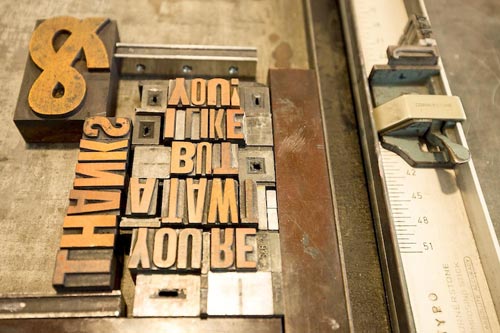No one understands document design better than Spencer Minuteman Press. We offer the best CBD printing tips! We’ve already brought you articles on creating the perfect poster, keeping things in mind like placement of visuals, and tips on your newsletter design. Today we’re talking about text. Read on to find out our professional pointers on using fonts effectively.
Mix Wisely
At the very most, choose two fonts for your project. You’ll want to make sure they are distinctive; you shouldn’t have to study the fonts to pick up on their subtle differences. It’s more pleasing to the eye if you can immediately see the contrast. That being said, make sure the fonts are complimentary. You shouldn’t pair old typewriter style font with curly cursive, for example. Make sure both fonts are appropriate to the project and work well together.
In addition to using two fonts, play around with bolding, capitalising, and font size to highlight certain portions of text.
A Simple Font is Best
We know there are thousands of fonts out there and you want to play around with them all, but save the fun for personal stationery. If you have a business or school printing project, go with a simple, basic, okay, we’ll say it—boring font. You want your font to be familiar to your readers, making it more comfortable for them to read.
Basic doesn’t have to mean traditional, though. While streamlined geometric fonts are clear and easy on the eyes, there are other options. Modern texts are similar to geometric fonts, but a bit more artistic. Most modern typefaces are unique while still being accessible to the reader. Humanist fonts are those fonts that resemble handwriting. Many of them are actually quite formal and lovely. If you have a more casual project, a humanist font might be right for you. Serif fonts have a little ‘foot’ or flick on the end of each letter.

Basic Fonts for Printing
You can find them in all different weights, too, from thin and dainty to thicker, bolder typefaces. Stay away from anything too flashy, though; you don’t want to make it difficult to read your text.
Font Size
Obviously, a smaller print job like flyer or a card will require different sized text than a poster. Keep these guidelines in mind to ensure your text is big enough to read:
If your text will be read while someone is holding it or standing right in front of it, you should use at least an 8-pt font. Any smaller will cause people to squint—or, more likely, just ignore the text. If your project will be read from a metre away, keep your font at least 16-pt. For signs or posters that need to be seen from the distance of a couple metres, use a minimum of 32-pt.
If you’re looking for help designing your digital printing project in Melbourne, come on in to Spencer Minuteman Press!








